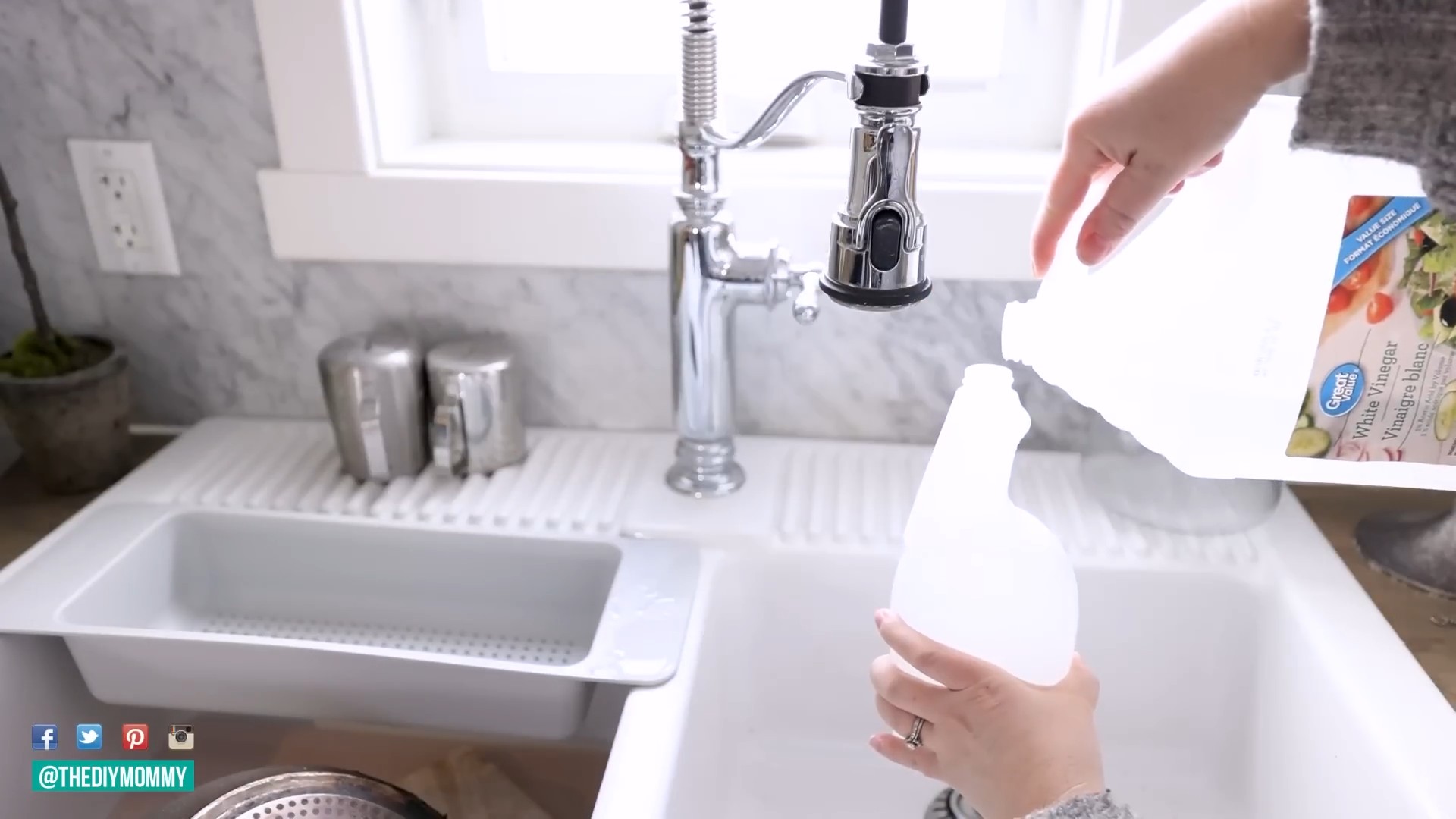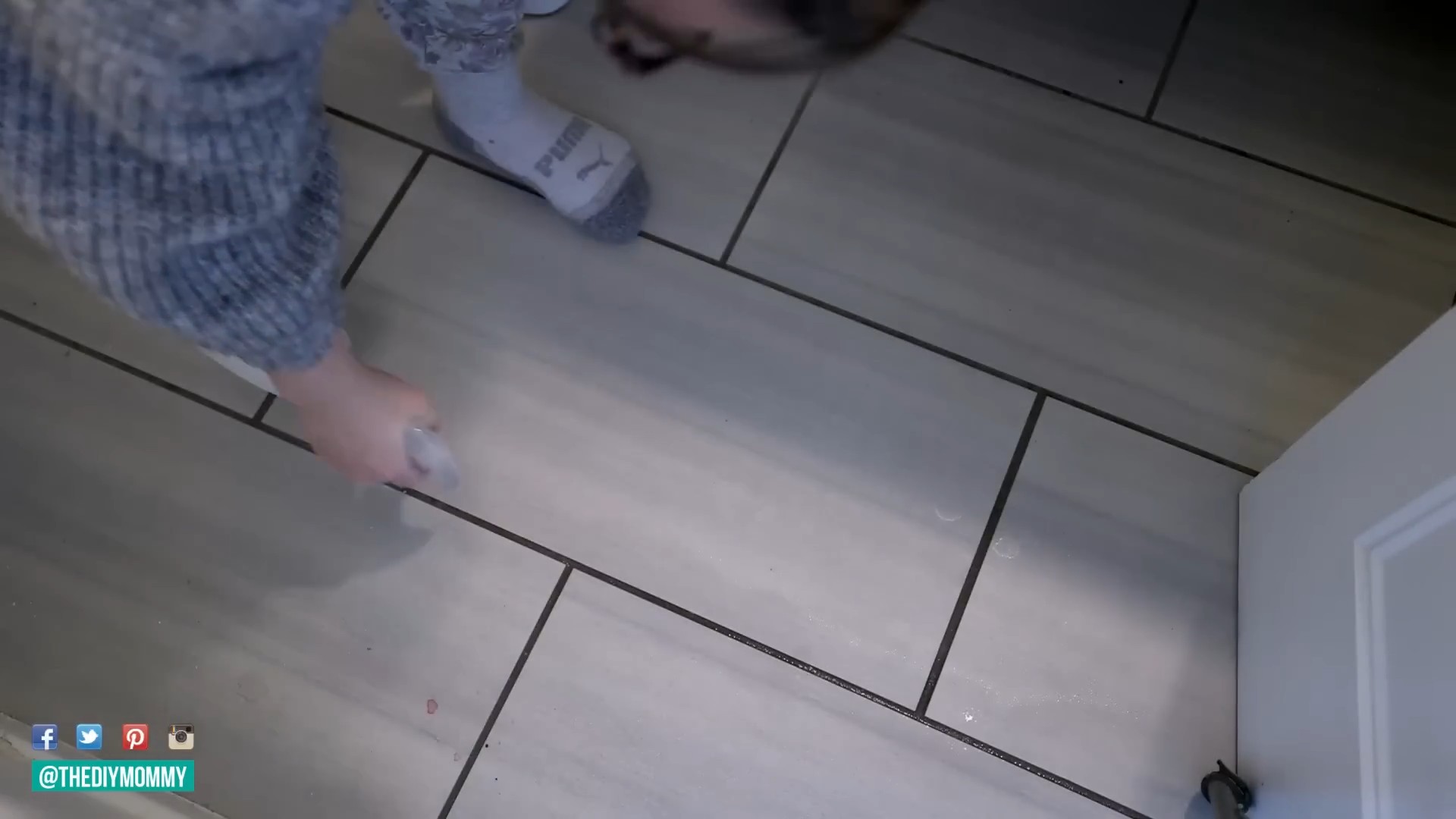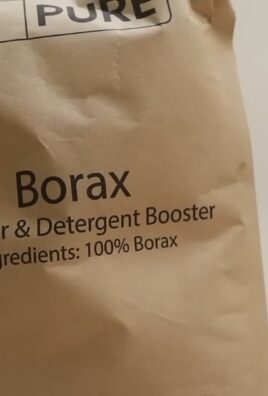Vinegar cleaning hacks – who knew this humble kitchen staple could be your secret weapon to a sparkling home? I’m always on the lookout for budget-friendly and eco-conscious ways to keep my space clean, and let me tell you, vinegar has become my go-to solution for tackling all sorts of messes.
For centuries, vinegar has been more than just a condiment. Ancient civilizations, from the Egyptians to the Romans, recognized its potent cleaning and preserving properties. They used it to disinfect wounds, clean surfaces, and even preserve food. Talk about a multi-tasker!
In today’s world, we’re bombarded with harsh chemicals and expensive cleaning products. But what if I told you that you could achieve the same, if not better, results with something you probably already have in your pantry? That’s where these vinegar cleaning hacks come in. From banishing stubborn stains to deodorizing your home, vinegar offers a natural and effective alternative to conventional cleaners. Plus, it’s incredibly affordable and environmentally friendly – a win-win for your wallet and the planet!
Ready to ditch the chemicals and embrace the power of vinegar? Let’s dive into some amazing DIY cleaning tricks that will transform your home and simplify your life. You’ll be amazed at what this simple ingredient can do!

Unlocking the Cleaning Power of Vinegar: My Favorite DIY Hacks
Vinegar, that humble bottle sitting in your pantry, is a cleaning superhero in disguise! I’ve been using it for years, and I’m constantly amazed by its versatility and effectiveness. Not only is it a natural and eco-friendly alternative to harsh chemicals, but it’s also incredibly budget-friendly. Let me share some of my favorite DIY vinegar cleaning hacks that will transform your cleaning routine.
General Tips for Vinegar Cleaning
Before we dive into the specific hacks, here are a few general tips to keep in mind:
* Always dilute vinegar with water. Undiluted vinegar can be too acidic for some surfaces and may cause damage. A common ratio is 1:1 (one part vinegar to one part water), but you can adjust it depending on the task.
* Test on an inconspicuous area first. Before applying vinegar to a large surface, test it on a small, hidden spot to ensure it doesn’t cause discoloration or damage.
* Avoid using vinegar on certain surfaces. These include marble, granite, waxed wood, aluminum, and cast iron. The acidity can etch or damage these materials.
* Use white distilled vinegar. This is the most common and versatile type of vinegar for cleaning.
* Ventilate the area. Vinegar has a strong odor, so open windows or turn on a fan to ventilate the area while you’re cleaning.
* Don’t mix vinegar with bleach. This combination creates toxic chlorine gas, which is extremely dangerous.
Hack 1: Sparkling Clean Windows and Mirrors
Say goodbye to streaks and smudges! Vinegar is my go-to solution for achieving crystal-clear windows and mirrors.
Materials You’ll Need:
* White distilled vinegar
* Water
* Spray bottle
* Microfiber cloth or squeegee
Step-by-Step Instructions:
1. Prepare the cleaning solution: In a spray bottle, mix equal parts white distilled vinegar and water. I usually use a 1:1 ratio, but if your windows are particularly dirty, you can use a slightly higher concentration of vinegar.
2. Spray the surface: Lightly spray the vinegar solution onto the window or mirror. Avoid oversaturating the surface, as this can lead to streaks.
3. Wipe clean: Use a clean microfiber cloth or squeegee to wipe the surface. If using a microfiber cloth, fold it into quarters to have multiple clean surfaces to work with. If using a squeegee, overlap each stroke slightly to prevent streaks.
4. Dry (optional): If you’re using a microfiber cloth, you may not need to dry the surface. However, if you’re using a squeegee, you can use a clean, dry cloth to wipe the edges and corners.
Hack 2: Deodorizing and Cleaning Your Dishwasher
My dishwasher can get pretty funky sometimes, especially after washing greasy dishes. Vinegar is a fantastic way to deodorize and clean it naturally.
Materials You’ll Need:
* White distilled vinegar
* Dishwasher-safe bowl or cup
Step-by-Step Instructions:
1. Remove any food debris: Before starting, make sure to remove any large pieces of food debris from the bottom of the dishwasher.
2. Place vinegar in the dishwasher: Fill a dishwasher-safe bowl or cup with one cup of white distilled vinegar. Place the bowl on the top rack of the empty dishwasher.
3. Run a hot cycle: Run the dishwasher on a hot cycle. The vinegar will help to dissolve grease, remove odors, and sanitize the interior.
4. Repeat monthly: I recommend doing this once a month to keep your dishwasher clean and fresh.
Hack 3: Unclogging Showerheads
Hard water can cause mineral buildup on showerheads, reducing water pressure and making them look grimy. Vinegar can dissolve these mineral deposits and restore your showerhead to its former glory.
Materials You’ll Need:
* White distilled vinegar
* Plastic bag (large enough to fit the showerhead)
* Rubber band or twist tie
Step-by-Step Instructions:
1. Fill the bag with vinegar: Pour enough white distilled vinegar into the plastic bag to completely submerge the showerhead.
2. Attach the bag to the showerhead: Secure the bag to the showerhead with a rubber band or twist tie. Make sure the showerhead is fully immersed in the vinegar.
3. Soak overnight: Let the showerhead soak in the vinegar overnight. This will give the vinegar enough time to dissolve the mineral deposits.
4. Remove the bag and rinse: In the morning, remove the bag and rinse the showerhead thoroughly with water.
5. Wipe clean: Use a clean cloth to wipe away any remaining residue.
6. Run the shower: Run the shower for a few minutes to flush out any remaining vinegar and debris.
Hack 4: Cleaning Your Microwave
Microwaves can quickly become splattered with food and grease. Vinegar makes cleaning them a breeze!
Materials You’ll Need:
* White distilled vinegar
* Water
* Microwave-safe bowl
* Sponge or cloth
Step-by-Step Instructions:
1. Prepare the vinegar solution: In a microwave-safe bowl, mix equal parts white distilled vinegar and water. I usually use one cup of each.
2. Microwave the solution: Place the bowl in the microwave and heat it on high for 5-10 minutes, or until the solution boils and the microwave is filled with steam.
3. Let it sit: Leave the bowl in the microwave for another 5-10 minutes. The steam will help to loosen the food splatters and grease.
4. Wipe clean: Carefully remove the bowl from the microwave (it will be hot!). Use a sponge or cloth to wipe down the interior of the microwave. The loosened food and grease should come off easily.
5. Rinse and dry: Rinse the sponge or cloth with clean water and wipe down the interior of the microwave again. Dry with a clean cloth.
Hack 5: Freshening Up Your Laundry
Vinegar can be a great addition to your laundry routine. It can help to remove odors, soften fabrics, and brighten colors.
Materials You’ll Need:
* White distilled vinegar
Step-by-Step Instructions:
1. Add vinegar to the wash: Add 1/2 cup of white distilled vinegar to the fabric softener dispenser of your washing machine.
2. Wash as usual: Wash your clothes as usual. The vinegar will help to remove odors, soften fabrics, and brighten colors.
3. For extra stinky loads: For particularly stinky loads, you can also add 1/2 cup of vinegar to the wash cycle along with your regular detergent.
Hack 6: Cleaning Coffee Makers
Over time, coffee makers can accumulate mineral deposits that affect the taste of your coffee. Vinegar is an effective and natural way to descale your coffee maker.
Materials You’ll Need:
* White distilled vinegar
* Water
Step-by-Step Instructions:
1. Fill the water reservoir: Fill the water reservoir of your coffee maker with equal parts white distilled vinegar and water.
2. Run a brewing cycle: Run a full brewing cycle with the vinegar solution.
3. Rinse with water: After the brewing cycle is complete, discard the vinegar solution and fill the water reservoir with fresh water.
4. Run two more brewing cycles: Run two more brewing cycles with fresh water to rinse out any remaining vinegar.
5. Repeat as needed: I recommend doing this every 1-3 months, depending on how often you use your coffee maker and the hardness of your water.
Hack 7: Removing Stickers and Adhesive Residue
Stubborn stickers and adhesive residue can be a pain to remove. Vinegar can help to soften the adhesive and make it easier to peel off.
Materials You’ll Need:
* White distilled vinegar
* Cloth or paper towel
Step-by-Step Instructions:
1. Soak the sticker or residue: Soak a cloth or paper towel in white distilled vinegar.
2. Apply to the sticker or residue: Place the soaked cloth or paper towel over the sticker or adhesive residue and let it sit for 5-10 minutes.
3. Peel or wipe away: After soaking, the sticker should be easier to peel off. If there’s any remaining adhesive residue, wipe it away with the cloth or paper towel.
4. Repeat if necessary: If the sticker or residue is particularly stubborn, you may need to repeat the process.
Hack 8: Cleaning and Deodorizing Cutting Boards
Cutting boards can harbor bacteria and odors, especially after cutting raw meat or strong-smelling foods.

Conclusion
So, there you have it! These vinegar cleaning hacks are not just simple; they’re transformative. They offer an effective, eco-friendly, and budget-conscious way to tackle some of the most common household cleaning challenges. Forget harsh chemicals and expensive specialty cleaners. With a bottle of vinegar, you’re armed with a versatile solution that can degrease, deodorize, disinfect, and descale, all while leaving your home smelling fresh (or easily freshened with essential oils!).
Why is this a must-try? Because it simplifies your cleaning routine, reduces your environmental impact, and saves you money. It’s a win-win-win! You’re not just cleaning; you’re making a conscious choice for a healthier home and a healthier planet.
But don’t stop there! The beauty of these vinegar cleaning hacks lies in their adaptability.
Here are a few variations to consider:
* Infused Vinegar: For a more pleasant scent, infuse your vinegar with citrus peels (lemon, orange, grapefruit) or herbs (lavender, rosemary, thyme) for a few weeks before using. This adds a subtle fragrance that can elevate your cleaning experience. Simply place the peels or herbs in a jar, cover with vinegar, seal, and let it sit in a cool, dark place. Strain before using.
* Vinegar and Baking Soda Power Duo: For stubborn stains or clogged drains, combine vinegar with baking soda. The fizzing action helps to loosen debris and break down grime. Remember to use this combination with caution, as it can create pressure in enclosed spaces.
* Vinegar and Essential Oils: Add a few drops of your favorite essential oils to your vinegar cleaning solutions for added fragrance and potential antimicrobial benefits. Lavender, tea tree, lemon, and eucalyptus are all great choices.
* Vinegar for Laundry: Add a cup of vinegar to your laundry as a natural fabric softener and odor eliminator. It can also help to brighten whites and remove soap residue.
We’ve covered a lot of ground, from cleaning your microwave to revitalizing your showerhead. Now it’s your turn to put these vinegar cleaning hacks to the test. We’re confident that you’ll be amazed by the results.
Don’t just take our word for it. Try these hacks out for yourself and see the difference they can make in your home. We encourage you to experiment, adapt, and discover your own favorite vinegar cleaning combinations.
Most importantly, we want to hear about your experience! Share your tips, tricks, and before-and-after photos in the comments below. Let’s build a community of vinegar cleaning enthusiasts and inspire others to embrace this simple, sustainable, and effective cleaning method. What are you waiting for? Grab that bottle of vinegar and get cleaning!
Frequently Asked Questions (FAQs)
Is vinegar safe to use on all surfaces?
No, vinegar is not safe to use on all surfaces. Avoid using vinegar on natural stone surfaces like marble, granite, and limestone, as the acidity can etch and damage them. It’s also best to avoid using vinegar on waxed wood furniture, as it can strip the wax finish. Exercise caution when using vinegar on electronics, and always dilute it with water before using it on painted surfaces. When in doubt, test a small, inconspicuous area first.
What type of vinegar is best for cleaning?
White distilled vinegar is the best type of vinegar for cleaning. It’s inexpensive, readily available, and has a high acidity level, making it effective at dissolving grime, killing bacteria, and deodorizing. Avoid using flavored vinegars, as they may contain sugars or other additives that can leave a sticky residue.
Can I use vinegar to clean my coffee maker?
Yes, vinegar is an excellent natural descaler for coffee makers. To clean your coffee maker with vinegar, fill the water reservoir with a solution of equal parts white distilled vinegar and water. Run the coffee maker through a full brewing cycle. Then, run two cycles with fresh water to rinse away any remaining vinegar. This will help to remove mineral buildup and improve the performance of your coffee maker.
Will vinegar remove hard water stains?
Yes, vinegar is effective at removing hard water stains from surfaces like showerheads, faucets, and shower doors. To remove hard water stains, soak the affected area in vinegar for 30 minutes to an hour. For showerheads, you can fill a plastic bag with vinegar and secure it around the showerhead with a rubber band. For faucets and shower doors, you can apply vinegar with a sponge or cloth. After soaking, scrub the area with a brush or sponge and rinse with water.
Does vinegar kill mold?
Vinegar can kill some types of mold, but it’s not as effective as bleach for killing all types of mold. Vinegar is most effective at killing common household molds like mildew. To kill mold with vinegar, spray the affected area with undiluted white distilled vinegar and let it sit for an hour. Then, wipe the area clean with a damp cloth. For more stubborn mold growth, you may need to repeat the process or use a stronger mold killer.
How can I make vinegar smell better when cleaning?
The strong smell of vinegar can be off-putting to some people. To make vinegar smell better when cleaning, you can infuse it with citrus peels or herbs, as mentioned earlier. You can also add a few drops of your favorite essential oils to your vinegar cleaning solutions. Lemon, lavender, tea tree, and eucalyptus essential oils are all great choices for cleaning. Another option is to simply open windows and ventilate the area while you’re cleaning. The vinegar smell will dissipate quickly once the area is dry.
Can I mix vinegar with bleach?
Never mix vinegar with bleach! Mixing vinegar with bleach creates chlorine gas, which is highly toxic and can be fatal. Always use vinegar and bleach separately, and never combine them in the same container or cleaning solution.
How often should I clean with vinegar?
The frequency of cleaning with vinegar depends on the area and the level of dirt and grime. For general cleaning, you can use vinegar solutions once or twice a week. For areas that are prone to mold or mildew, like bathrooms, you may need to clean with vinegar more frequently. For descaling appliances like coffee makers and kettles, you can clean with vinegar every few months.
Is vinegar safe for septic systems?
Yes, vinegar is generally safe for septic systems. Unlike harsh chemicals, vinegar is a natural substance that won’t harm the beneficial bacteria in your septic tank. In fact, vinegar can even help to break down organic matter in your septic system. However, it’s important to use vinegar in moderation and avoid pouring large amounts of undiluted vinegar down the drain.
Can vinegar be used to clean pet messes?
Yes, vinegar is a great natural cleaner for pet messes. It can help to remove stains and odors from carpets, upholstery, and other surfaces. To clean pet messes with vinegar, blot up as much of the mess as possible with a clean cloth. Then, spray the area with a solution of equal parts white distilled vinegar and water. Let it sit for a few minutes, then blot it up with a clean cloth. Repeat as needed until the stain and odor are gone. You can also sprinkle baking soda on the area after cleaning with vinegar to help absorb any remaining odors.





Leave a Comment